Related Research Articles
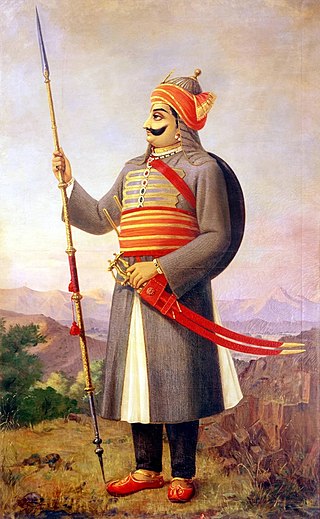
Pratap Singh I, popularly known as Maharana Pratap, was a king of Kingdom of Mewar, in north-western India in the present-day state of Rajasthan. He is notable for leading the Rajput resistance against the expansionist policy of the Mughal Emperor Akbar including the Battle of Haldighati and the Battle of Dewair.

Haldighati is a historical mountain pass between Khamnore and Balicha village situated at Aravalli Range of Rajasthan in western India which connects Rajsamand and Udaipur districts. Haldighati also known as Haldighati Darra.The pass is located at a distance of 44 kilometres from Udaipur and 367 kilometres from Jaipur. The name 'Haldighati' is believed to have originated from the turmeric-coloured yellow soil of the area..
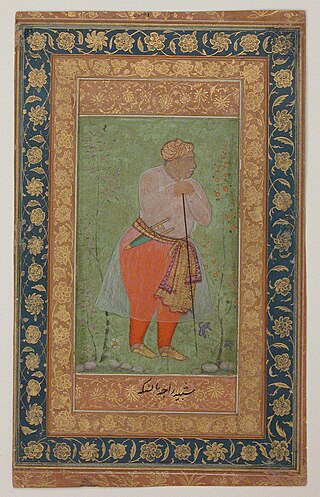
RajaMan Singh I was the 24th Maharaja of Kingdom of Amber from 1589 to 1614. He also served as the Subahdar of Bengal for three terms from 1595 to 1606 and the Subahdar of Kabul from 1585 to 1586. He served in the Mughal Army under Emperor Akbar. Man Singh fought sixty-seven important battles in Kabul, Balkh, Bukhara, Bengal and Central and Southern India. He was well versed in the battle tactics of both the Rajputs as well as the Mughals. He is commonly considered to be one of the Navaratnas, or the nine (nava) gems (ratna) of the royal court of Akbar.
Gogunda is a town and tehsil headquarters of Gogunda Tehsil in Udaipur district, located about 35 km (22 mi) in north-west from Udaipur city in the Indian state of Rajasthan. It is situated on a high mountain in Aravalli hills and is reached by crossing a difficult mountain pass.
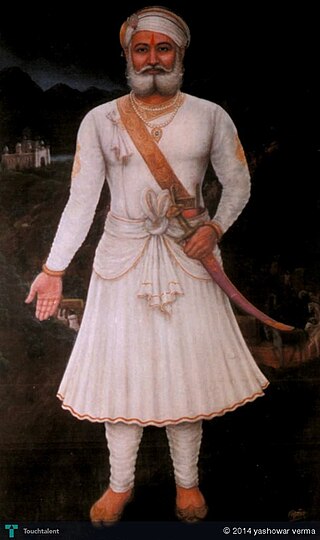
Bhama Shah (1547–1600) was a noted general, minister and close aide of Maharana Pratap Singh. The financial support provided by him allowed Maharana Pratap to restore his army and reclaim much of his lost territory.

The battle of Haldighati was fought on 18 June 1576 between the Mewar forces led by Maharana Pratap, and the Mughal forces led by Man Singh I of Amber. The Mughals emerged victorious after inflicting significant casualties on Mewari forces, though they failed to capture Pratap, who reluctantly retreated persuaded by his fellow commanders.
Udai Singh II was the 12th Maharana of the Kingdom of Mewar and the founder of the city of Udaipur in the present-day state of Rajasthan, India. He was the fourth son of Rana Sanga and Rani Karnavati, a princess of Bundi.
Hakim Khan Sur was an ethnic Pashtun and a descendant of Sher Shah Suri. He served as the general in Rana Pratap's army and fought alongside him in the Battle of Haldighati, where he was killed in 1576. During the battle, he commanded an army of Afghans who attempted to stop the expansion of the Mughal Empire.

The Kingdom of Mewar was an independent kingdom that existed in the Rajputana region of the Indian subcontinent and later became a major power in medieval India. The kingdom was initially founded and ruled by the Guhila dynasty followed by the Sisodiya Dynasty. The kingdom came to be known as the Udaipur State after it became a princely state in the nineteenth century.
The Rawe Rajput is a subcaste of Rajputs found in the Indian states of Delhi and Uttar Pradesh. They are descendant of eminent rulers of aristocratic Rajput clans. The variations of the name include Raya/Raye/Rava/Rave/Rawa/Rawe Rajput
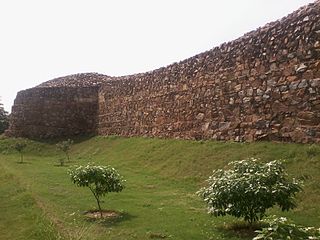
Anangpal II, popularly known as Anangpal Tomar, was an Indian ruler from the Tomara dynasty. He is known to have established and populated Delhi in the 11th century. He is often confused with Anangpal I, the founder of Tomar Dynasty of Delhi, who had reigned during the 8th century. He traced the lineage to Chandravanshi Kshatriya kings, namely Arjuna from the epic Mahabharata.
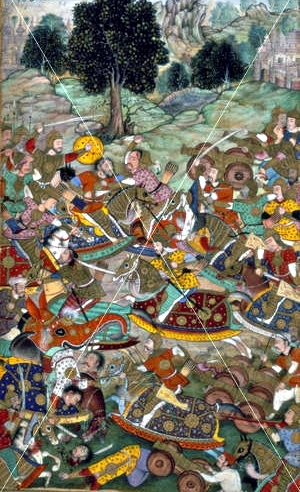
The Mughal–Rajput wars were a series of battles between the Rajput Confederacy and the Mughal Empire. The conflicts originated with the invasion of northwestern India by the Mughal ruler Babur, to which the head of the Rajput confederacy, Rana Sanga, offered staunch resistance. The conflicts went on since 1526 for over 200 years, with the Mughals having the upper hand until the death of Aurangzeb in 1707, following which they entered a declining phase and the Rajputs gained the upper hand, with the last recorded conflict taking place in 1779.

Maharana Pratap: The First Freedom Fighter is an Indian epic film based on Maharana Pratap of Mewar .The film is directed and produced by Dr. Pradeep Kumawat from Udaipur, Rajasthan. It is the first time that a film has been made on the history of Maharana Pratap. The film's sound track includes one of the last songs sung by Late Jagjit Singh.
Shalivahan Singh Tanwar was heir apparent and son of Ramshah Tanwar the Tomar Rajput ruler of Gwalior. They were ousted by Akbar and sought refuge in Mewar which at the time was the only state who refused Akbar as head of state.
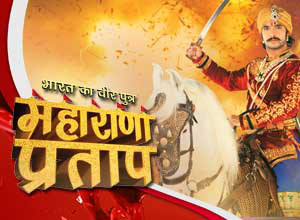
Bharat Ka Veer Putra – Maharana Pratap is an Indian historical fiction series produced by Contiloe Entertainment. It is based on the life of Maharana Pratap, a sixteenth century ruler of Mewar kingdom. It starred Sharad Malhotra, Rachana Parulkar, Faisal Khan and Roshni Walia.

Maharana Amar Singh I, the Maharana ruler of Mewar Kingdom, was the eldest son and successor of Maharana Pratap I. He was the 14th Rana of Mewar, ruling from 19 January 1597 until his death on 26 January 1620.

Jaimal Rathore (1507–1568) was the Rathore (Mertiya) ruler of Merta. He was cousin of the Hindu saint Mirabai and Great grandson of Rao Jodha Rathore and Grandson of Rao Duda Rathore. He became the ruler of Merta after the death of his father, Rao Veeram Dev. His father was perceived as the strongest king of the east in his time. The Amar Kavya records that Udai Singh II granted Badnor along with 210 villages to Rao Jaimal. In 1553, Jaimal resisted falling under the chakri of Maldeo of Marwar.
Ajabde Panwar, popularly known as Maharani Ajabde, was the queen of Kingdom of Mewar. Ajabde is the chief consort and first wife of Maharana Pratap, and the mother of Amar Singh I. She was known for her beauty, intelligence and influence in Pratap's life.
Shakti Singh Sisodia Mewar was the son of Maharana Udai Singh II Sisodia and Rani Sajja Bai Solanki. He was a Kshatriya Rajput and was younger brother of famous Maharana Pratap, He was also the eponymous founder of the Shaktawat clan of Sisodia Rajputs.
References
- ↑ B. D. Misra, Forts and fortresses of Gwalior and its hinterland, Page 50
- ↑ Tomars of Gwalior by Harihar Niwas Dwivedi. Gwalior: Vidyamandir Publications. 1983. p. 194.
- ↑ Tomars of Gwalior by Harihar Niwas Dwivedi. Gwalior: Vidyamandir Publications. 1983. pp. 243–249.
- ↑ Tomars of Gwalior by Harihar Niwas Dwivedi. Gwalior: Vidyamandir Publications. 1983. pp. 243–249.
- ↑ Tomars of Gwalior by Harihar Niwas Dwivedi. Gwalior: Vidyamandir Publications. 1983. pp. 243–249.
- ↑ Jadunath Sarkar: A History of Jaipur 1503-1938, page 60-61
- ↑ pratap Charitra A History of Jaipur 1503-1938, page 60-61
- ↑
- ↑ M. N. Mathur, Battle of Haldighati, Page 2